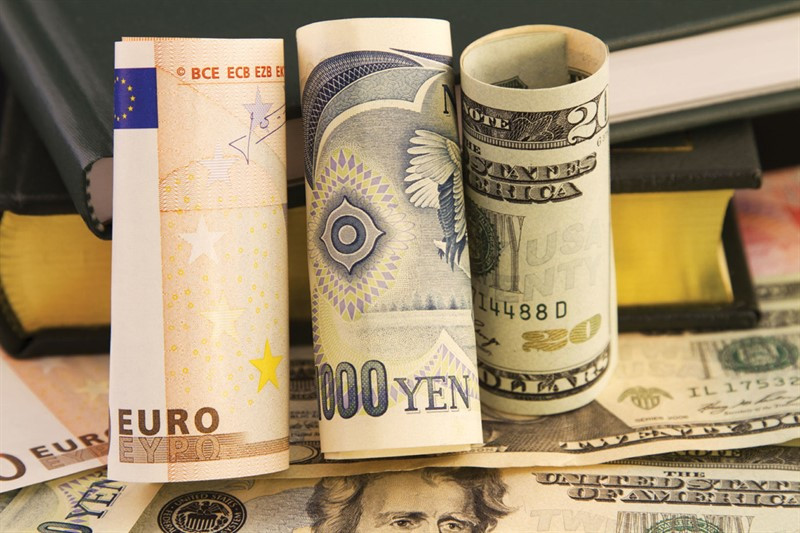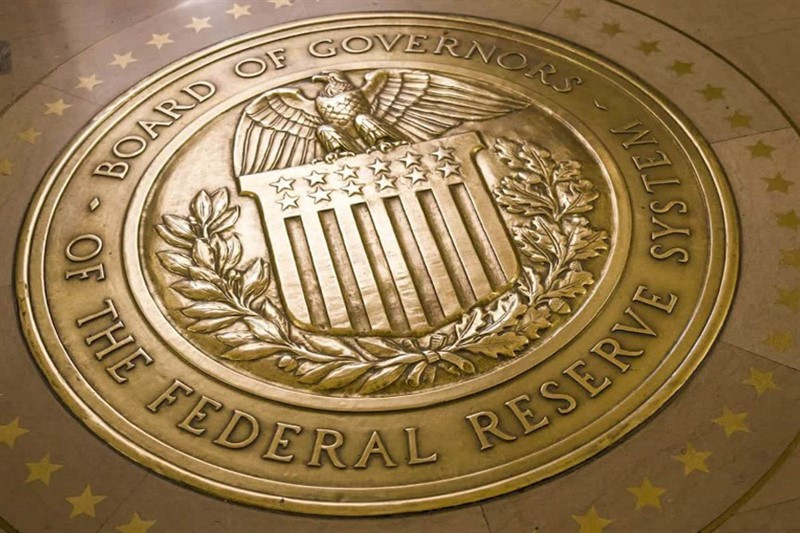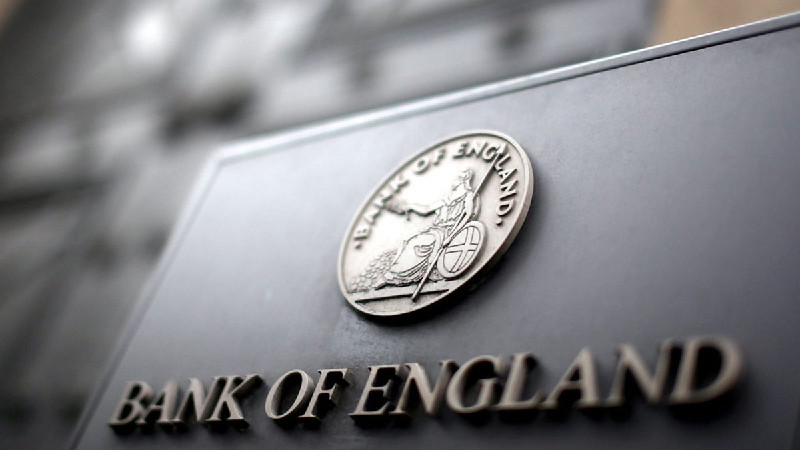
More than 70 years have passed since Washington successfully integrated the dollar into the central nervous system of the world economy, and the United States gained the role of the dominant force.
And the main lesson of the current crisis, according to geopolitical strategist George Friedman, is that the United States has demonstrated that perhaps the most powerful weapon in the world is the dollar.
Why does the US dollar have such power? The answer to this question is quite obvious: USD is a unit for calculating global loans and invoicing, a means of payment and savings, giving privileges to the issuer, who can use the currency at will.
Since the dollar accounts for about 40% of global trade settlements and about 60% of government reserves, there is no doubt that it has more influence than the euro, yen or pound.
However, turning the US currency into a weapon will not only lead to fragmentation of the global economy, but may also force the rest of the world to find ways to make transactions and store valuables bypassing the US, experts warn.
The Organization for Economic Cooperation and Development (OECD) believes that attempts to develop an alternative system could potentially reduce the dominant role of the dollar in financial markets and in cross-border payments.
Recently, BlackRock CEO Larry Fink said that the conflict in eastern Europe could lead to a large-scale change in supply chains, payment systems and, very likely, will make digital currencies more popular.
"Even before the outbreak of hostilities in Ukraine, some states researched and developed digital currencies and a regulatory framework for their work. A global digital payment system, if properly designed, can make international payments transparent, reduce the risk of money laundering and corruption. Digital currencies can reduce the cost of international transactions, for example, when an employee sends money to his family in another country," Fink said.
China is already making certain efforts in this direction.

China's cross–border interbank payment system (CIPS - an alternative to the SWIFT system) and its digital currency (eCNY) may become the dominant payment system and currency, respectively, for trade between China and its numerous trading partners, The Financial Times reports.
In the long term, the electronic yuan can also become an important reserve currency. However, China has yet to build the appropriate infrastructure to become a global financial center, PineBridge Investments notes.
The absence of a truly credible alternative suggests that the greenback will remain the dominant global currency.
Global corporations, pension funds and asset managers keep their money in dollars, getting the opportunity to have savings and quick liquidity from swaps.
As long as there is no real threat to the existence of USD and the solvency of the US government, they will avoid active steps to sell dollar-denominated assets.
"The greenback is the state currency of a quasi-imperial global system in which different economic regions are linked by a common reserve currency," says American political scientist Herman M. Schwartz.
In his opinion, reserve currencies that have neither military influence nor the depth of stock markets that bring higher returns, such as the euro, yen or pound, cannot become the dominant currency.
Gas "bomb" for the euro
Heavily oversold due to concerns about the economic consequences of the military conflict in Ukraine and the threat of its spread to the west, the euro benefited from hopes for peace on Tuesday, while the protective dollar suffered from increased risk appetite.
The day before, another round of peace talks between Kiev and Moscow took place, which surprised with progress.

After the head of the Russian delegation, Vladimir Medinsky, said that the negotiations were constructive, market participants once again believed in the possibility of a diplomatic settlement of the crisis and de-escalation of tensions.
As a result, the USD index lost 0.7%, dropping to 98.50 points. At the same time, the EUR/USD pair broke a four-day losing streak and jumped to 1.1135, adding about 150 points amid encouraging headlines.
On Wednesday, the greenback is testing multi-day lows around 98.00, declining by more than 0.5%. The next descending barrier appears at 97.70 (weekly low on March 10), followed by a 55-day moving average at 96.95.
As the dollar remains in the background, the EUR/USD pair does not give up trying to extend yesterday's rebound.
An important support is the 1.1100 mark, near which the 200-day moving average passes. Next, the pair will encounter intermediate resistance at 1.1140 before continuing its rise to 1.1200.
On the other hand, if EUR/USD falls below 1.1100 and starts using this level as resistance, then the next support is located at 1.1080 (61.8% of the Fibo correction), and then at 1.1040 (50% of the Fibo correction).
The dollar came under pressure on Tuesday amid optimism around Russian-Ukrainian peace talks. Nevertheless, the decline in the US currency should not last long, according to ING.
"We doubt that there is much of a premium for geopolitical risk left in most assets, as the markets seem to have taken an optimistic position long before the peace talks yielded any result," the bank's economists said.

"The dollar remains able to become the market leader, mainly due to the fact that the Fed is accelerating the pace of tightening: currently, we expect the central bank to raise the key rate by 50 bps both in May and in June," they added.
"We still suspect that the foreign exchange market may move further away from the Russian-Ukrainian situation and begin to react to rates and the yield differential. All of this points to a stronger dollar. Consolidating USD above 98.00 may be an early sign of this dynamic," ING said.
As for the EUR/USD pair, which rose by more than 1% on Tuesday, according to the bank's economists, today it can stay at around 1.1100, but there are still significant downside risks in the coming weeks.
"Geopolitical risk now looks almost entirely embedded in prices, while rate differentials and other fundamental factors indicate a weakening of the EUR/USD pair," ING noted.
It is assumed that the US central bank, which has already raised the key rate by 25 basis points at its March meeting, will be more aggressive than its European counterpart, which will lead to an increase in the dollar against the euro.
In addition, it is expected that Europe, due to its geographical proximity and dependence on energy supplies from Russia, will suffer more than the United States due to the conflict that began with the entry of Russian troops into the territory of a neighboring state on February 24 and led to a sharp increase in energy prices.
"The longer the military conflict continues, the higher the economic costs will be and the higher the likelihood that we will find ourselves in more unfavorable scenarios," European Central Bank President Christine Lagarde said on Wednesday.
However, these comments do not seem to have a noticeable impact on the dynamics of the single currency in relation to its American competitor, as investors continue to regard positive developments in the dialogue between Moscow and Kiev as a chance for an early conclusion of a peace agreement.

At the same time, the markets completely ignore the risk of disconnecting Russian gas for the EU. Given that European leaders refuse to pay for "blue fuel" in rubles, stating that such an option is unacceptable, the likelihood of such a scenario remains high.
The shutdown of gas will not lead to any immediate catastrophe for the eurozone since the level of fullness of European storage facilities is now about 25%. However, already in April, a cold snap is expected in the region, and without Russian gas, the level of fullness of European storage facilities will begin to decline again, and gas prices are likely to go up. This, in turn, will cause more problems for energy-intensive industries in Europe.
However, the truly catastrophic situation in the region promises to become closer to autumn, and European leaders will be forced to return to the issue of gas purchases for rubles. Now they reject such a possibility for political reasons, given that the military conflict in Ukraine is in an active phase.
In any case, the disconnection of the EU from Russian gas will have the most negative effect on the exchange rate of the single currency, and a decrease in the EUR/USD pair to parity in this case is quite likely.
So far, the main currency pair remains bullish. It can target 1.1200 while bulls continue to defend 1.1100.
The yen is back in the game
It is noteworthy that the improvement in market sentiment, which caused the weakening of the dollar, led not only to a broad rally of risky assets, but also lifted the protective yen from the almost seven-month low.
On Tuesday, the Japanese currency rose 0.89% against the greenback to 122.83 yen. A day earlier, the USD/JPY pair rose to its highest level since August 2015 at 125.10.
The yawning gap between the hawkish Fed and the dovish Bank of Japan has led to the recent fall of the yen.
Investors were getting rid of the Japanese currency, as the BOJ accelerated the printing of money to buy bonds from the market in order to stop the growth of yields.

On Wednesday, the Bank of Japan announced that it had conducted an emergency market operation, offering to buy government bonds worth 100 billion yen for a period of 10-25 years, but the USD/JPY pair could not recover. Moreover, it continued to decline, dropping 0.9% during the day, to 121.50.
On the eve of the Japanese Finance Minister Shunichi Suzuki said that the government will closely monitor the movement of the national currency to prevent excessive weakening of the yen, which will harm the economy.
"While the comments by Japanese officials are unlikely to change the yen's weakening trend by themselves, they should at least help slow down the recent rapid pace of JPY sales," said strategists at MUFG Bank.
The Japanese yen is enjoying a rally, but the broader outlook suggests that it is unlikely to recover significantly at the moment, according to Scotiabank.
"Nominal yield differentials are a powerful source of support for USD at the moment. Wide yield spreads also make the JPY expensive to buy and an attractive funding currency. Commodity prices may remain high, which weakens Japan's terms of trade. As a result of the increase in the cost of imports, the country's position on external accounts has weakened in recent months, which undermined the yen's position as a safe haven," the bank's specialists said.
According to them, the market positioning for the Japanese currency has become too bearish, which caused the correction of USD/JPY.
"A pullback below 120 may be possible in the next 2-4 weeks, but we believe that the risk that the Fed will raise rates by 50 bps at the May meeting and possibly signal that the pace of tightening will gain momentum over the next few meetings will limit the opportunities for dollar losses and maintain a good USD/JPY support in the 118-120 zone," Scotiabank said.
Meanwhile, Credit Suisse analysts note that the USD/JPY pair seems to have reached marginal highs at 125.29-125.86 (from 2015) and expect a consolidation phase with support at 121.02-120.72.
"We have probably already seen a peak in this phase of USD/JPY strengthening, and given that the trade-weighted JPY index also receives key support of the neck line to the base of 2014/2016, we expect further short-term weakening, and then a consolidation phase," they said.
"Support is marked at the Fibo level of 38.2% of the rally correction since the end of February and the 13-day exponential average in the area of 121.02–120.72, which should stand for now. Its breakthrough and closing lower may lead to a deeper drawdown – to support at 119.75. A breakthrough above 123.21 is needed to clear the way for a return to 124.31, and a breakdown of this level will clear the way for a recovery to recent highs at 125.10," Credit Suisse said.
Pound in anticipation of April
Unlike its European counterpart, the British pound showed modest gains on Tuesday, strengthening against the US dollar by a symbolic 0.04%.
Having reached a local high in the area of 1.3160, the GBP/USD pair fell below the level of 1.3100 and ended yesterday's trading near 1.3095.

The pound continued to show weakness after Bank of England Governor Andrew Bailey announced on Monday that the central bank had softened its forecasts for rates, citing economic uncertainty.
At the same time, he warned of a fuel crisis and a sharp increase in the cost of living due to sanctions against Russia.
"This is really a historic shock for real incomes. The shock from energy prices this year will be stronger than in the 1970s," Bailey said.
According to him, the Bank of England will take the necessary measures to mitigate the impact on the British economy.
On Wednesday, the deputy head of the BoE, Ben Broadbent, spoke in a similar vein.
"There are many unpredictable shocks affecting the economy, things that would otherwise stimulate output and inflation, and the corresponding path of interest rates is also unpredictable," he said.
"The Russian operation in Ukraine has led to a significant increase in the cost of energy and other goods. As a major net importer of manufactured goods and raw materials, it is doubtful that the UK has ever experienced an external blow to real national income on such a scale. From the point of view of monetary policy, this will lead in the near future to a complex combination of even higher inflation and weaker domestic demand and production growth," Broadbent added.
However, these comments did not have a significant impact on the pound, which still joined the so-called "relief rally" today , following the general negative market sentiment towards the dollar.
The GBP/USD pair rose within the day by 0.4% to the area of 1.3150. Closing above this area may signal a possible reversal of the pound, economists at Scotiabank believe.
"The dynamics of the pound since testing the $1.33 level last week indicates a continuation of the drawdown in the direction of a repeat test of $ 1.30. Nevertheless, yesterday the British currency twice decently stayed in the area of $1.3050 and managed to make a clean breakdown of the $1.3100 level without much pressure from bears," they noted.
The Bank of England's recent 25bp rate hike failed to support the pound's rally, and it reversed from an intra-month high at $1.3295. However, the pound's decline from a peak of $1.4248 in June last year seems to be nearing completion, and the GBP/USD pair is preparing for a supposedly better April, according to DBS Bank analysts.
"The pound is under pressure, and its price movement occurs within the descending channel, where we have a double triple correction model. This model is usually considered corrective in nature, and when it is completed, it will make it possible to open long positions on GBP/USD. During the 10-year period, April is the most constructive month for the bulls," they said.
Bank of America strategists believe that a strong April season may lead to an increase in GBP/USD to 1.3500.
"The markets showed price support at 1.3000 in March, and we assume that this is the level that bulls will defend until some fundamental/macroeconomic event weakens the pound. We are considering long positions on GBP/USD in the March fall, while the pair is trading above the support at 1.3000. The high of the April channel is at 1.3500," they said.





















